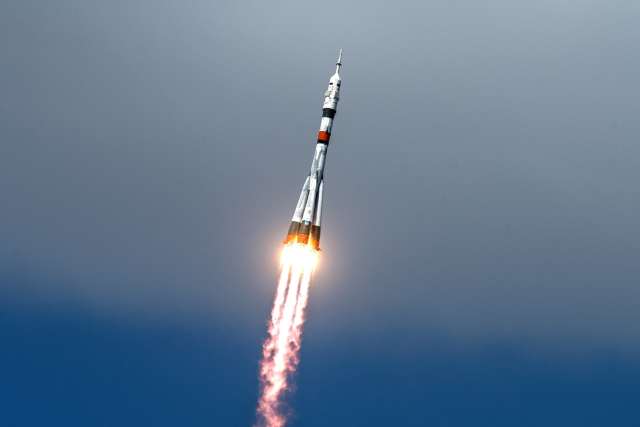The Belarusian cosmonaut is due to go into low Earth orbit next autumn on a Roscosmos spacecraft. The head of the National Academy of Sciences of the Republic shared details about the preparation and objectives of the mission.
Chairman of the Presidium of the Belarusian National Academy of Sciences (NAS) Vladimir Gusakov in an interview with "Gazeta.Ru" told how the selection of candidates for a space flight on a Russian ship took place and what tasks the cosmonaut of the republic faces on the ISS.
The fact that Belarus will be preparing to send its representative to the International Space Station in the fall of 2023 became known this April. Then Vladimir Putin and Alexander Lukashenko visited Baikonur, and the Russian president instructed Roscosmos to organize the flight of a Belarusian cosmonaut on Soyuz-MS. By June 15, the NAS submitted a list of 29 candidates (including nine women), from which the Yuri Gagarin Cosmonaut Training Center should subsequently select one crew member and an understudy.
According to Gusakov, the applicants could be citizens of Belarus permanently residing on its territory. They had to submit an application, undergo a special medical examination and meet the requirements of Roscosmos for health indicators. Both men and women aged 25-40 years of any kind of activity could participate in the selection, there are no restrictions on the availability of awards or military service.
"One of the selection criteria is the ability of a candidate for cosmonauts to carry out a program of scientific research intended to be carried out on the ISS. Although health requirements are still in the first place," Gusakov added.
However, there are requirements for education and work experience (at least three years): so, the candidate must have a good command of English, graduate from a university — preferably in master's, postgraduate or doctoral programs — or have an academic degree/title in the following specialties: "physics", "physical and technical sciences and technologies", "medical sciences", "chemistry", "botany", "biological sciences", "aviation and rocket and space technology", "instrumentation", "optical and biotechnical systems and technologies".
As for the tasks on the International Space Station, everything is standard: a citizen of Belarus will conduct research in the field of medicine, biology, physiology, ensuring the operation of space stations and remote sensing of the Earth using the achievements of Belarusian scientists. All details will be agreed with the Russian side.
The head of the NAS stressed that the flight of the Belarusian cosmonaut into orbit is a project, as a result of which they want to assess the prospects and expediency of further cooperation with Moscow. Although Minsk was not engaged in space training either in recent history or during the Soviet Union, because it did not have laboratories and the necessary equipment, natives of the country flew into space — for example, Soviet cosmonauts and Heroes of the USSR Peter Klimuk and Vladimir Kovalenok, as well as a member of the Soyuz TMA-06M, Soyuz MS-03, Soyuz MS-18 expeditions Oleg Novitsky . They were trained in Russia. Nevertheless, there are Belarusian-made video and photographic equipment on the ISS.
Today, the Soyuz MS-23 crew, which will go to the International Space Station next spring, includes Oleg Kononenko, Nikolai Chub and Andrey Fedyaev. The Belarusian cosmonaut will make a short-term flight in the autumn of 2023 and will return on the same Soyuz MS-23. According to Dmitry Rogozin, for the sake of this, one of the Russians will stay in orbit (who exactly is not yet known).

